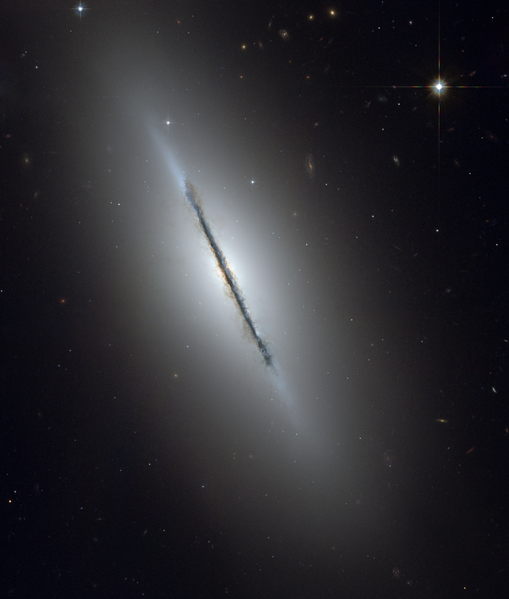Fil:Ngc5866 hst big.png

Storlek på förhandsvisningen: 509 × 599 pixlar. Andra upplösningar: 204 × 240 pixlar | 408 × 480 pixlar | 652 × 768 pixlar | 870 × 1 024 pixlar | 1 739 × 2 048 pixlar | 3 190 × 3 756 pixlar.
Originalfil (3 190 × 3 756 pixlar, filstorlek: 25,78 Mbyte, MIME-typ: image/png)
Filhistorik
Klicka på ett datum/klockslag för att se filen som den såg ut då.
| Datum/Tid | Miniatyrbild | Dimensioner | Användare | Kommentar | |
|---|---|---|---|---|---|
| nuvarande | 16 februari 2009 kl. 19.38 |  | 3 190 × 3 756 (25,78 Mbyte) | Spencer | {{Information |Description={{en|1=From original NASA press release: :This is a unique view of the disk galaxy en:NGC 5866 tilted nearly edge-on to our line-of-sight. Hubble's sharp vision reveals a crisp dust lane dividing |
Filanvändning
Följande sida använder den här filen:
Global filanvändning
Följande andra wikier använder denna fil:
- Användande på ab.wikipedia.org
- Användande på ace.wikipedia.org
- Användande på af.wikipedia.org
- Användande på af.wikibooks.org
- Användande på af.wikiquote.org
- Användande på af.wiktionary.org
- Användande på ak.wikipedia.org
- Användande på als.wikipedia.org
- Användande på am.wikipedia.org
- Användande på am.wiktionary.org
- Användande på ang.wikipedia.org
- Användande på ang.wiktionary.org
- Användande på an.wikipedia.org
- Användande på an.wiktionary.org
- Användande på arc.wikipedia.org
- Användande på ar.wikipedia.org
- Användande på ar.wikibooks.org
- Användande på ar.wikinews.org
- Användande på ar.wikiquote.org
- Användande på ar.wikisource.org
- Användande på ar.wikiversity.org
- Användande på ar.wiktionary.org
- Användande på arz.wikipedia.org
- Användande på ast.wikipedia.org
- Användande på ast.wiktionary.org
- Användande på as.wikipedia.org
- Användande på av.wikipedia.org
- Användande på ay.wikipedia.org
- Användande på ay.wiktionary.org
- Användande på az.wikipedia.org
- Användande på az.wikibooks.org
- Användande på az.wikiquote.org
- Användande på az.wikisource.org
- Användande på az.wiktionary.org
- Användande på bat-smg.wikipedia.org
- Användande på ba.wikipedia.org
- Användande på bcl.wikipedia.org
- Användande på be-tarask.wikipedia.org
- Användande på beta.wikiversity.org
- Användande på be.wikipedia.org
Visa mer globalt användande av denna fil.